Hi baking friends!
I’m not sure how we’ve come this far into my baking journey without me posting a vegan Pavlova recipe?!? I’ve built a bit of a reputation of ALWAYS using aquafaba… I mean… check out my aquafaba recipe index here.
Vegan pavlova is a delicious egg-free meringue-based dessert with a crisp crust and soft, fluffy inside, usually topped with fruit and whipped cream. Traditionally made with egg whites, this vegan pavlova is made using aquafaba and is almost indistinguishable from the original!
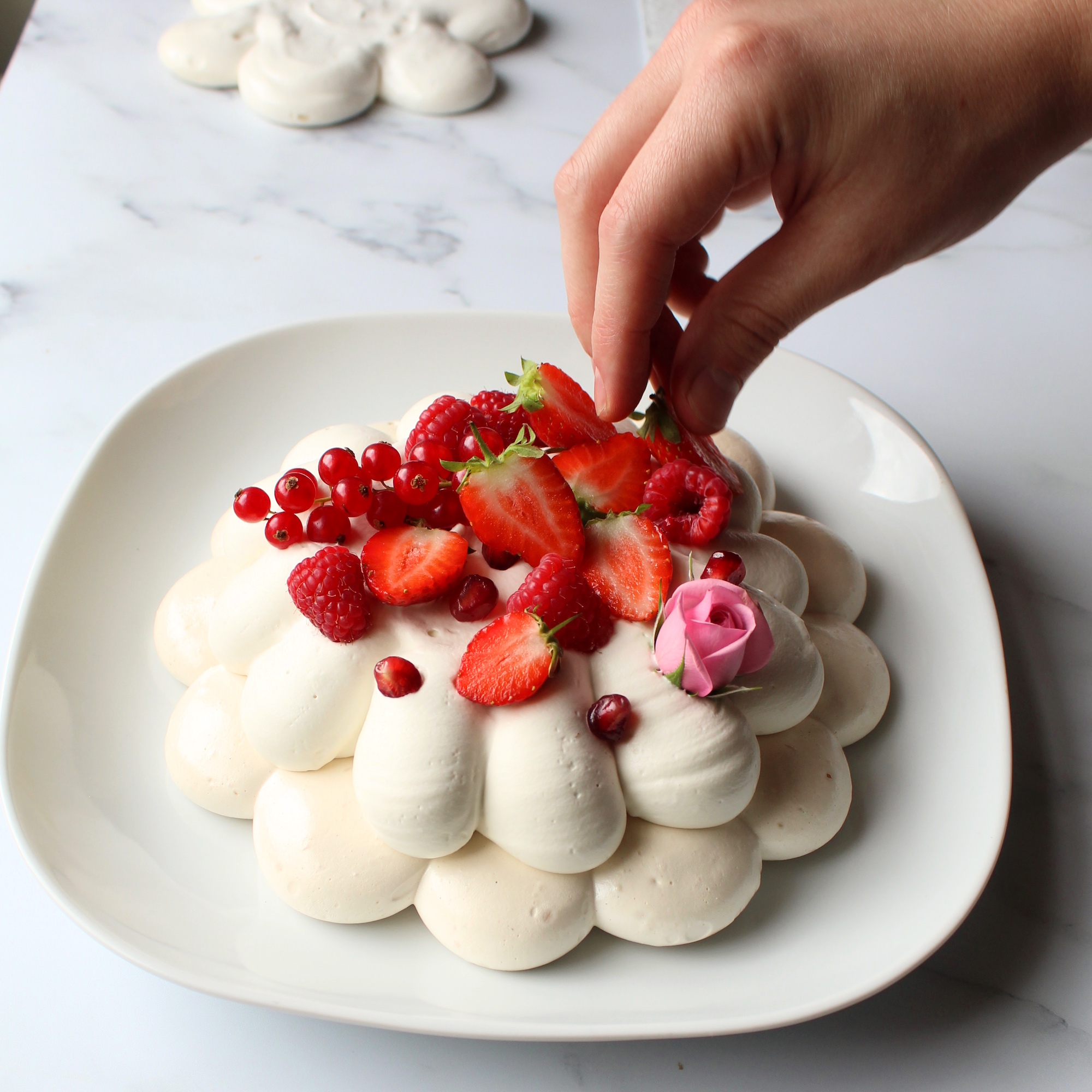
I won’t beat around the bush too much here as I’m sure y’all are dying to see what shenanigans I’ve put into this recipe but here are some recipe notes that I think are quite important!
You may have noticed that I’ve used the Swiss method for the meringue in this recipe instead of French or Italian.
Reminder:
- French (uncooked) – adding sugar directly to whipped meringue.
- Swiss (cooked) – “melting” sugar into egg whites/aquafaba and then whipping.
- Italian (cooked) – pour hot sugar syrup directly into whipped meringue.
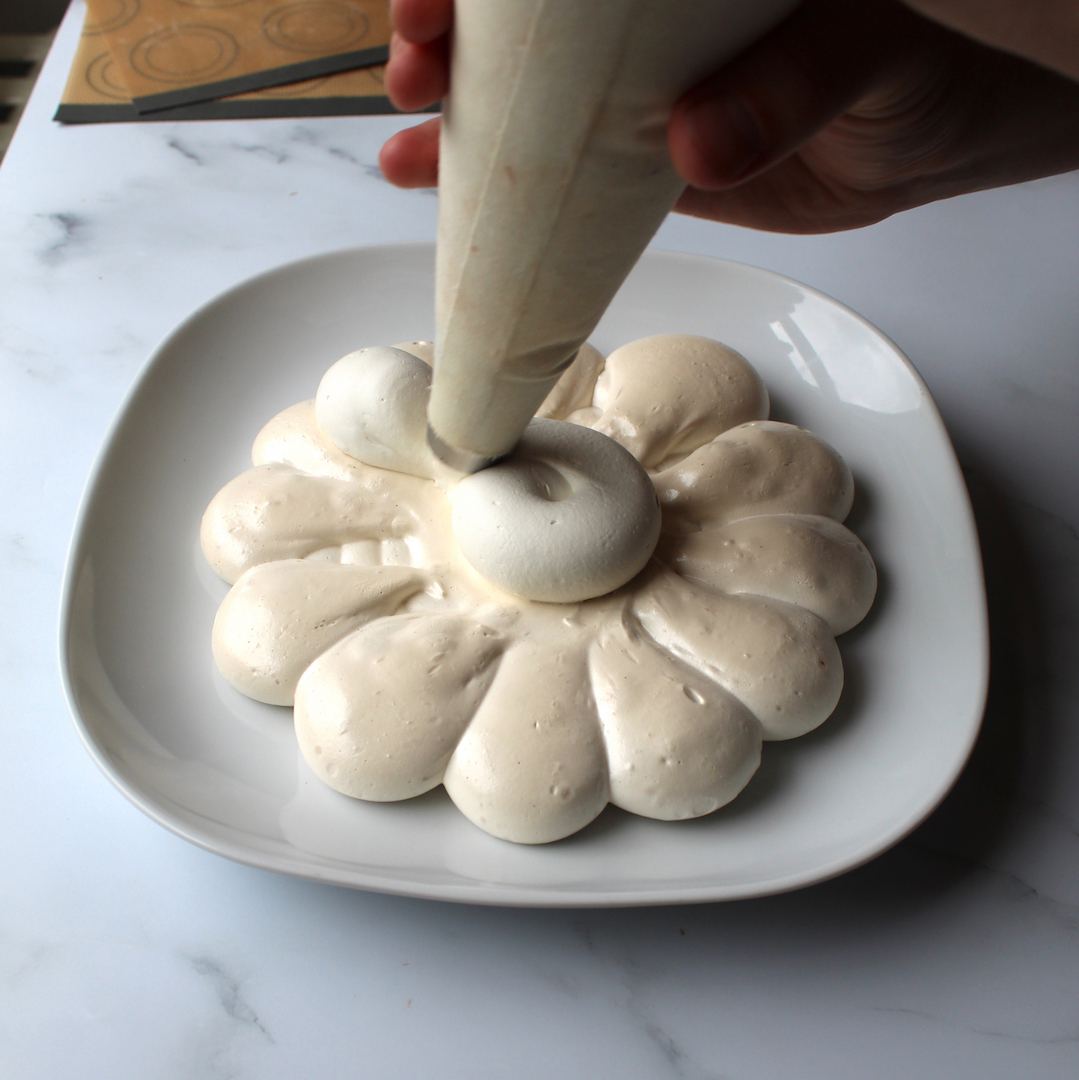
The reasons for using the Swiss method are twofold; it is the fastest method if you plan on reducing your aquafaba and the dissolving of the sugar into the aquafaba means we won’t have any lumps in our meringue.
I almost always reduce my aquafaba as it’s a failsafe way of making sure the protein content is potent enough to whip up a stable meringue. Since I planned on reducing the aquafaba, I might as well add the sugar while I do it so I can avoid a lumpy meringue.
If the pavlova needs to last a couple hours at a table, I would recommend dipping both meringue layers in vegan white chocolate to lock out the moisture. The top layer sitting on the whipped cream might otherwise turn gooey too soon.
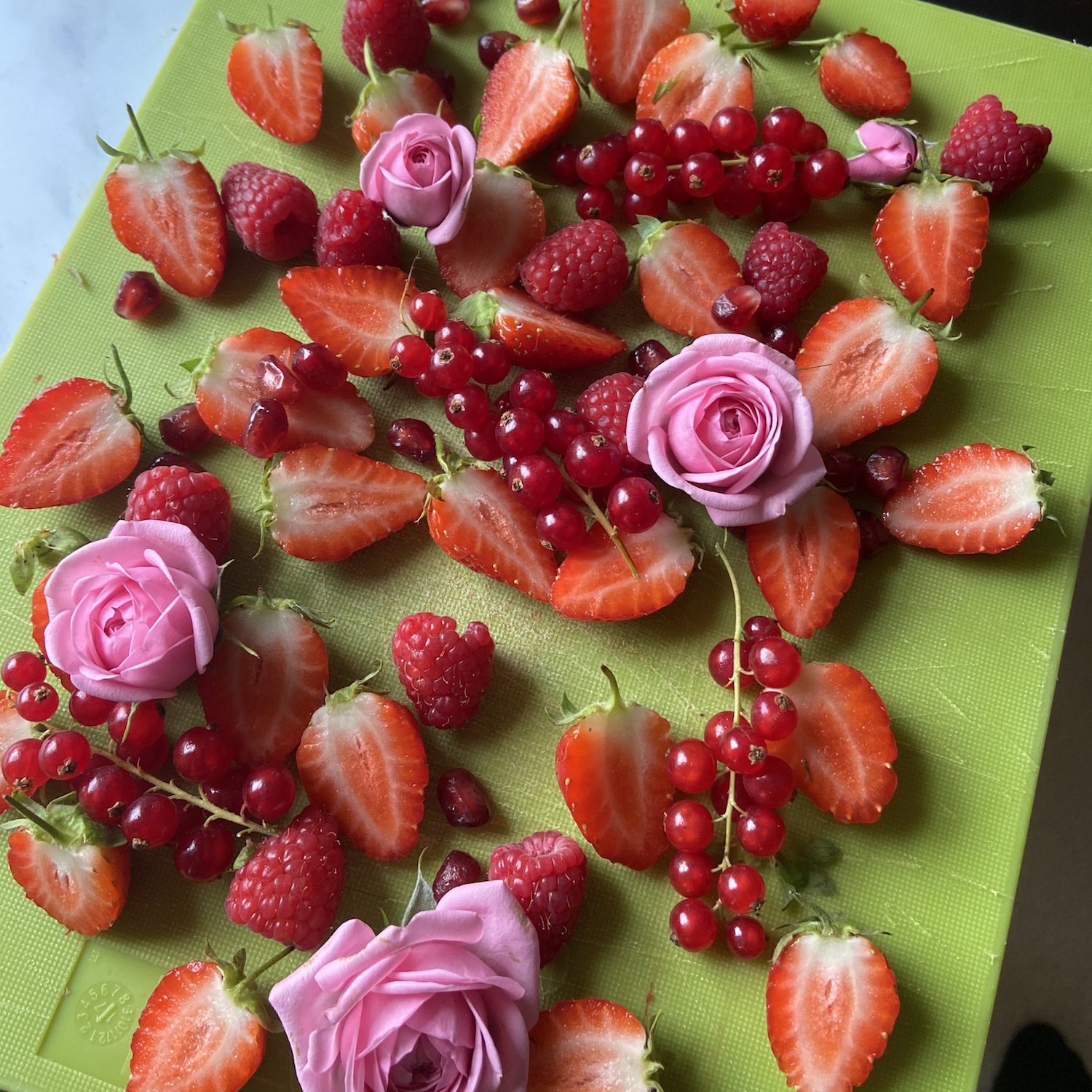
If you’re wanting to make this pavlova quicker than the recipe suggests – you could get away with cooking the meringues at 150C for about 45 minutes but just keep an eye on the colour of the meringue as it can turn golden very quickly.
To stabilise the meringue I’ve included cream of tartar and xanthan gum. Cream of tartar is an acid byproduct of winemaking and is used here to provide structure (vegan meringue is often missing acidity found in egg whites). The xanthan gum is also important as it’s a powerful thickening agent and stabilizer. You can get away with omitting these ingredients from the recipe but you may run into any one of the following problems; cracking, drooping, not whipping up to stiff peaks, deflating in the oven, etc.!
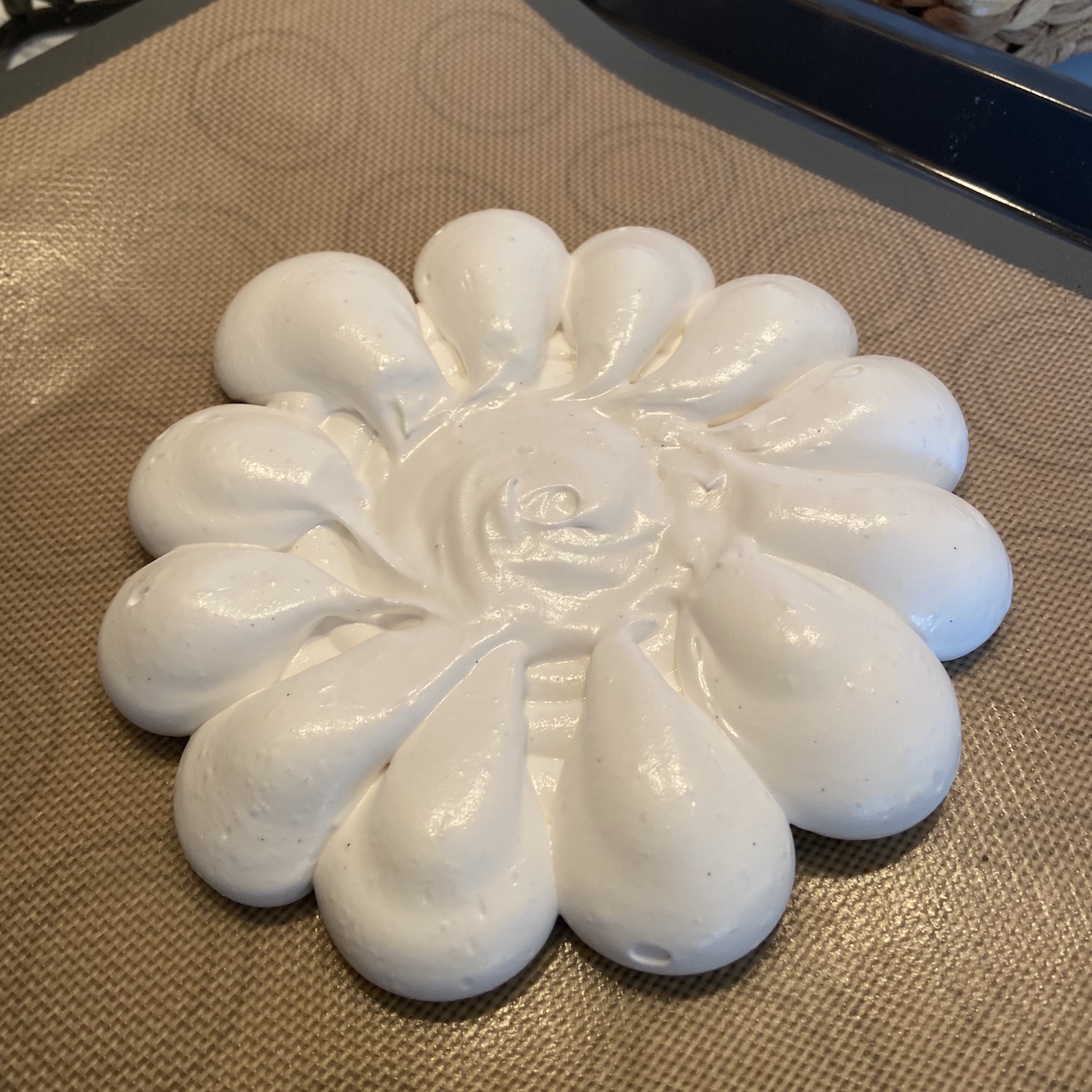
One last thing – in the UK we have access to this new plant-based double cream by the brand Elmlea! This cream whips up beautifully just like the dairy equivalent and it’s what I’ve used in the recipe photos. I appreciate that as this is a new product and not everyone will have access to it so here’s a recipe for a coconut whipped cream if you need it:
- 1 can full fat coconut milk
- 25 – 75g of icing sugar (depending on preferred sweetness)
- optional: 1 tsp vanilla extract + 1 pinch of salt
Chill the can of coconut milk in the fridge overnight or if possible for 48 hours (this guarantees the cream will stick to the top of the can).
Using a chilled mixing bowl, scoop out the coconut cream from the top of the can (avoiding the liquid) and add in the other ingredients. Place on medium speed for 5 minutes until light and fluffy. Serve immediately.
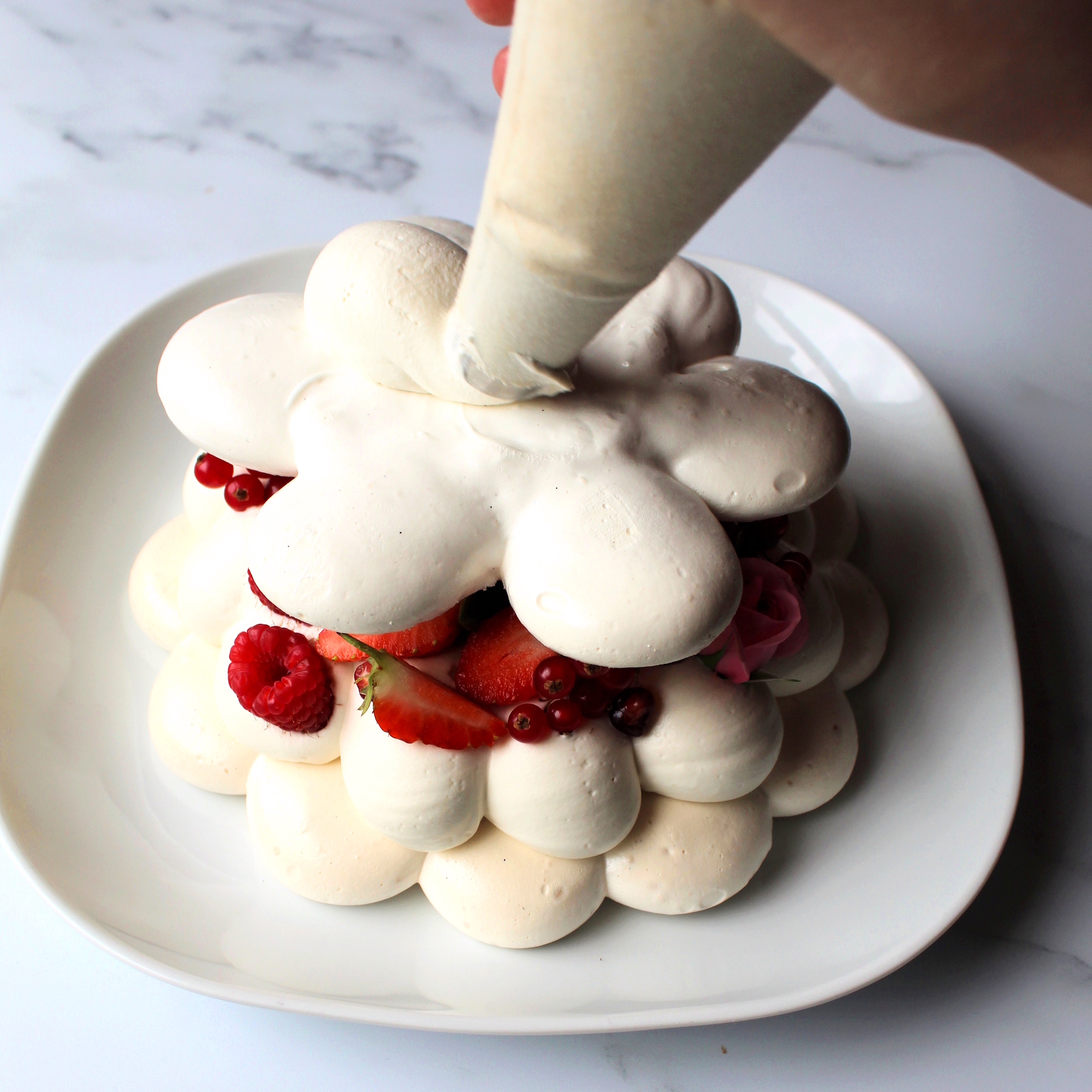
If you’re not a huge fan of whipped coconut cream you can also make your own soy-based double cream. You’ll need a soy cream base (these are widely accessible) and you would need to fortify the cream with stabilisers such as xanthan gum and some acids to make it whippable. Sara Kidd has a vegan whipped cream recipe in her Swedish Princess cake that you can find here!
For this recipe you’ll need:
- kitchen scale
- 1 large piping bag
- 20mm round tip (or whatever style you like to pipe!)
- silicone mat/parchment paper with baking tray
Enjoy!!
Vegan Pavlova
Crisp on the outside and light and fluffy on the inside, this vegan pavlova is decorated with fresh fruit and plant-based cream to the create the most perfect Summery dessert!
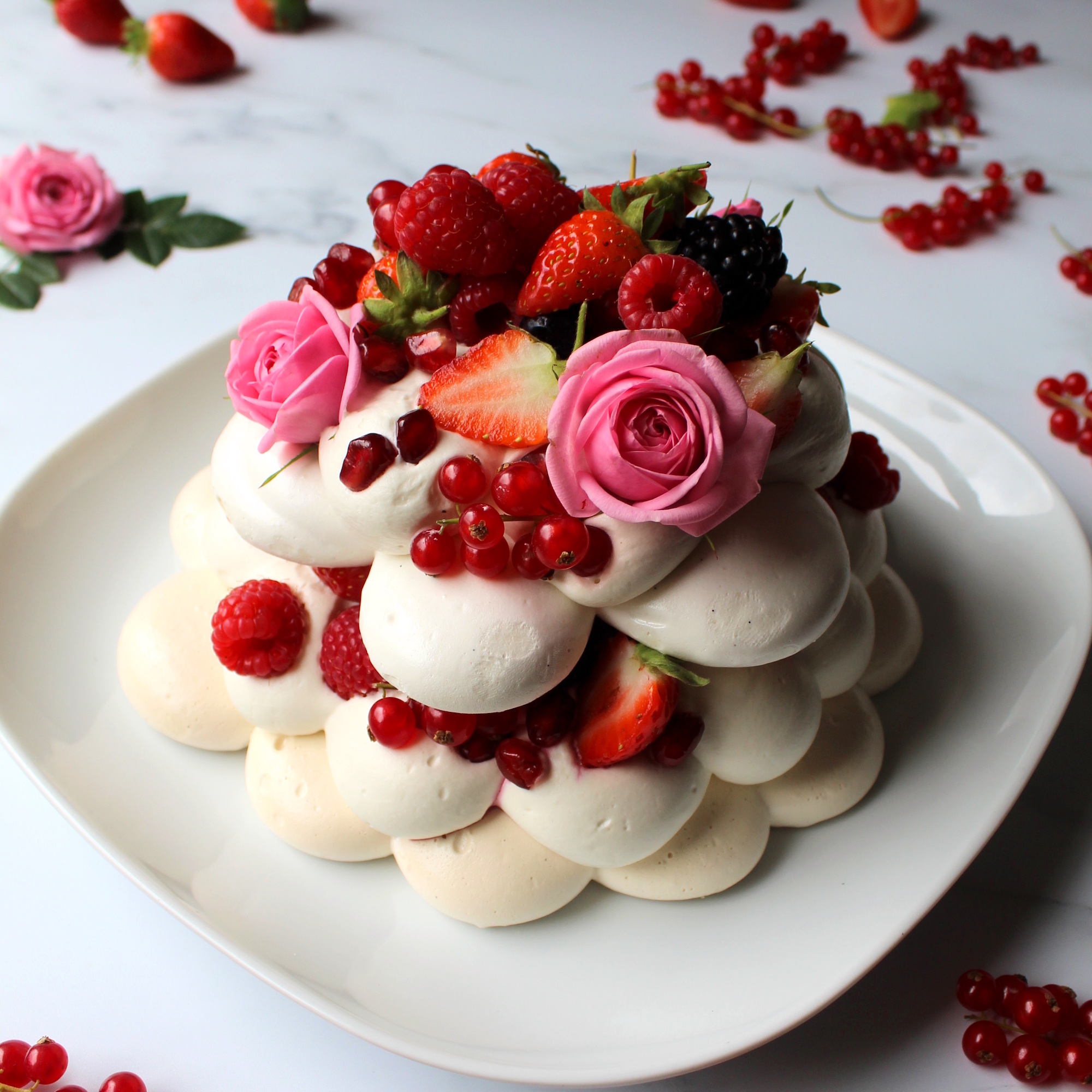
Ingredients
- Meringue Layer:
- 300g aquafaba (2 cans of chickpeas)
- 200g caster sugar
- ½ tsp cream of tartar
- ½ tsp xanthan gum
- pinch of salt
- Whipped Cream:
- 270ml Emlea plant-based double cream
- 50g icing sugar
- 1 tsp vanilla extract
- pinch of salt
- 300g assortment of fruit (raspberries, strawberries, red currants, blackberries etc.)
Directions
- Step 1 Pour the 300g of aquafaba and 200g caster sugar (500g total) into a saucepan on low heat. Simmer for 12-15 minutes until it has reduced to 350g total weight. You can check this by pouring the mixture into a bowl on a scale at 12 minutes to see if it is reduced enough.
- Step 2 Pour the aquafaba mix into a stand mixer bowl and leave to cool for 1 hour.
- Step 3 Heat the oven to 150°C.
- Step 4 Take a couple tablespoons of cooled aquafaba from the bowl and place into a separate smaller bowl and mix in the ½ tsp cream of tartar, ½ tsp xanthan gum and salt. Add this wet mix back into the stand mixer bowl. This is a helpful trick for the “dispersion” of dry ingredients into wet ones.
- Step 5 Turn the stand mixer up to medium speed and allow to whip up for 10-15 minutes.
- Step 6 Once it reaches stiff peaks, spoon the meringue into the large piping bag fitted with a large 20mm circular nozzle and pipe 2 circular discs of 20cm diameter (spiraling out from the center) with decorative edges if preferable.
- Step 7 Turn the oven down to 110°C and place the pavlovas into the oven for 90 minutes or until the pavlova is crisp and solid to the touch. Turn the oven off and leave to dry out for 3-6 hours (ideally overnight).
- Step 8 Whipped cream: Pour the plant cream into a chilled mixing bowl and add in the other ingredients. Use a balloon whisk and mix on medium speed for 5 minutes.
- Step 9 Optionally, switch to a paddle attachment and mix on medium speed for a further 3 minutes (this will pop some of those larger bubbles you have whipped up so it’ll be smoother in the piping bag.)
- Step 10 Scoop the cream into a large piping bag fitted with a 20mm nozzle and leave in the fridge to chill until you’re ready to construct.
- Step 11 Assembly: Place 1 disc of dry meringue on a plate and pipe whipped cream on top. Decorate with chopped fruit.
- Step 12 Place the 2nd disc on top, apply a 2nd layer of cream and pile up with more fruit.
- Step 13 Serve immediately.

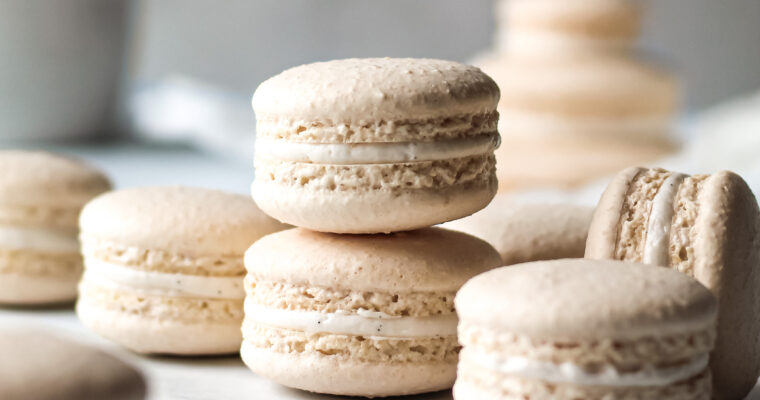
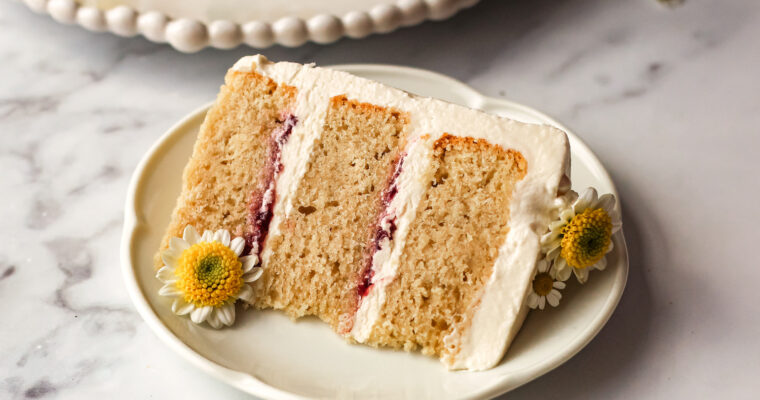
The BEST vegan pav recipe!!!
I’ve tried 6 other recipes and this is the by far the best one. Little to no cracking, held its shape in the oven, lovely colour, and beautiful taste and texture.
The Swiss meringue method is definitely the way to go! Thank you for the gorgeous recipe Tom. One I will be saving for all my future pavlovas!